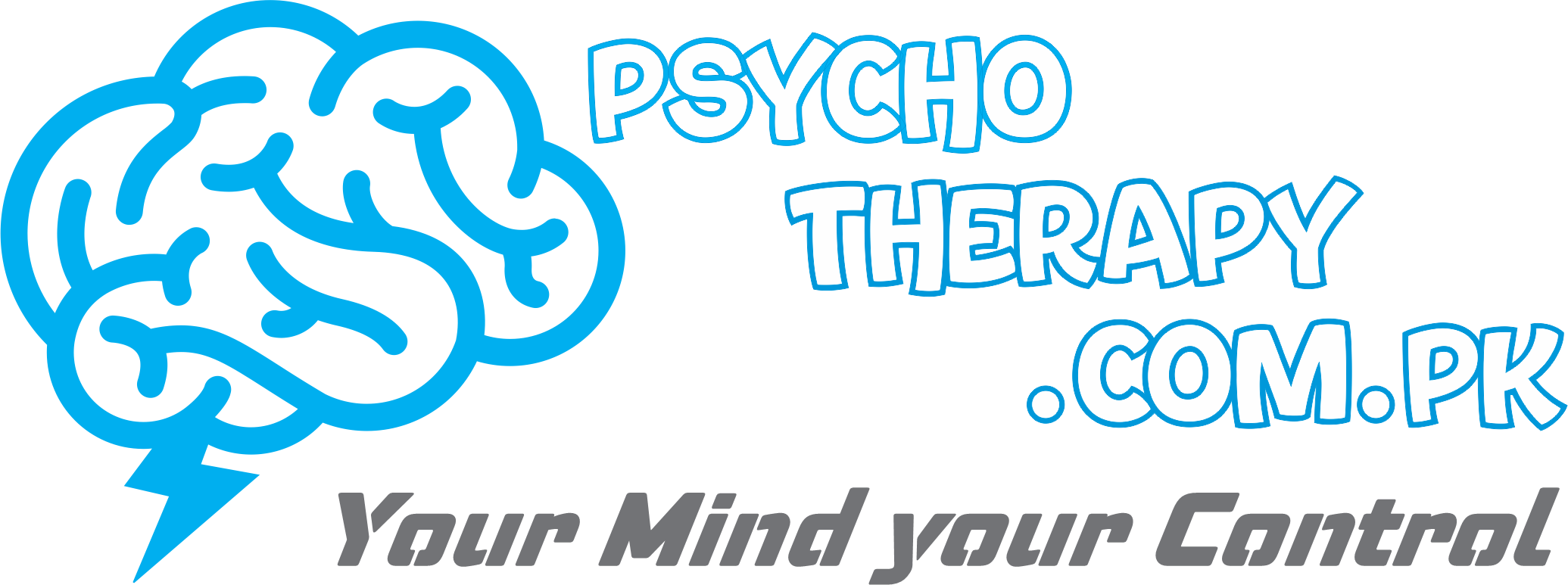Definition of Schizophrenia
Schizophrenia is a severe and chronic mental health disorder characterized by a range of symptoms that affect a person’s thinking, emotions, and behavior. It often includes disruptions in thought processes, perceptions, and emotional responsiveness. People with schizophrenia may experience hallucinations, delusions, disorganized thinking, and impairments in social and occupational functioning.
The symptoms of schizophrenia can be categorized into positive, negative, and cognitive symptoms:
- Positive symptoms: These are symptoms that represent an excess or distortion of normal functioning. They include hallucinations (perceptions without corresponding external stimuli, such as hearing voices), delusions (strongly held false beliefs), disorganized thinking, and movement disorders.
- Negative symptoms: These involve a decrease or loss of normal functioning. Negative symptoms may include reduced emotional expression, social withdrawal, difficulty initiating and sustaining activities, and diminished motivation.
- Cognitive symptoms: These affect cognitive abilities such as memory, attention, and problem-solving. Cognitive symptoms can contribute to difficulties in daily functioning and may be less apparent than positive or negative symptoms.
Schizophrenia typically emerges in late adolescence or early adulthood, and its exact cause is not fully understood. Both genetic and environmental factors are believed to play a role in its development. Treatment often involves a combination of antipsychotic medications, psychosocial interventions, and support services to help individuals manage symptoms and improve their overall quality of life. It’s important for individuals with schizophrenia to receive ongoing treatment and support, as the disorder is usually chronic and may require long-term management.

History of Schizophrenia
The history of schizophrenia is complex, and the understanding and classification of the disorder have evolved over time. Here’s a brief overview:
Early Descriptions (Pre-19th Century):
Historical records suggest that symptoms resembling schizophrenia have been present throughout human history. However, the disorder was not formally defined or classified in ancient times. Some historical figures may have exhibited symptoms similar to schizophrenia, but it is challenging to retroactively diagnose them.
19th Century:
The term “dementia praecox” was introduced by psychiatrist Emil Kraepelin in the late 19th century to describe a group of psychotic disorders characterized by early onset and a deteriorating course. Kraepelin’s work laid the foundation for distinguishing between different mental illnesses, including what we now recognize as schizophrenia.
20th Century:
Eugen Bleuler, a Swiss psychiatrist, coined the term “schizophrenia” in 1911. The word comes from the Greek roots “schizo” (split) and “phrenia” (mind), reflecting the fragmented thinking and disintegration of mental processes observed in individuals with the disorder. Bleuler emphasized the presence of both positive and negative symptoms.
Mid-20th Century:
The introduction of antipsychotic medications in the 1950s, such as chlorpromazine, marked a significant advancement in the treatment of schizophrenia. These medications helped manage positive symptoms and contributed to deinstitutionalization efforts, moving patients from psychiatric hospitals to community-based care.
Late 20th Century:
The Diagnostic and Statistical Manual of Mental Disorders (DSM) and the International Classification of Diseases (ICD) have played crucial roles in standardizing the diagnosis of mental disorders, including schizophrenia. Revisions of these manuals over the years have refined the diagnostic criteria for schizophrenia.
Current Understanding:
Modern research has identified genetic, neurobiological, and environmental factors contributing to the development of schizophrenia. Advances in neuroscience, brain imaging, and genetics have provided insights into the underlying mechanisms of the disorder.
Throughout history, societal perceptions and attitudes toward schizophrenia have varied, leading to stigmatization and misunderstanding. Efforts to reduce stigma, increase awareness, and improve treatment options continue in the contemporary mental health landscape. Ongoing research aims to enhance our understanding of schizophrenia, leading to more effective interventions and support for individuals affected by this challenging disorder.
DSM-5 Criteria of Schizophrenia
As of my last knowledge update in January 2022, the fifth edition of the Diagnostic and Statistical Manual of Mental Disorders (DSM-5) was the latest version available. Keep in mind that updates or new editions may have been released since then. Here are the DSM-5 criteria for schizophrenia:
To be diagnosed with schizophrenia, a person must meet the following criteria, and symptoms must persist for a significant portion of at least one month:
Characteristic Symptoms: Two (or more) of the following, each present for a significant portion of time during a one-month period (or less if successfully treated):
- Delusions
- Hallucinations
- Disorganized speech (e.g., frequent derailment or incoherence)
- Grossly disorganized or catatonic behavior
- Negative symptoms (e.g., diminished emotional expression or avolition)
Social/Occupational Dysfunction: For a significant portion of the time since the onset of the disturbance, one or more major areas of functioning, such as work, interpersonal relations, or self-care, are markedly below the level achieved prior to the onset.
Duration: Continuous signs of the disturbance persist for at least six months. This six-month period must include at least one month of symptoms (or less if successfully treated) that meet Criterion A (the first set of criteria) and may include periods of prodromal or residual symptoms.
Schizoaffective and Mood Disorder Exclusion: Schizoaffective disorder and mood disorder with psychotic features have been ruled out because either (1) no major depressive, manic, or mixed episodes have occurred concurrently with the active-phase symptoms, or (2) if mood episodes have occurred during active-phase symptoms, their total duration has been brief relative to the duration of the active and residual periods.
Substance/General Medical Condition Exclusion: The disturbance is not due to the direct physiological effects of a substance (e.g., a drug of abuse, a medication) or a general medical condition.
Relationship to Autism Spectrum Disorder: If there is a history of an autism spectrum disorder or a communication disorder of childhood onset, the additional diagnosis of schizophrenia is made only if prominent delusions or hallucinations, in addition to the other required symptoms of schizophrenia, are also present for at least one month (or less if successfully treated).
It’s important to note that a thorough clinical assessment by a qualified mental health professional is necessary for an accurate diagnosis, as schizophrenia is a complex disorder with varying presentations. If you or someone you know is experiencing symptoms suggestive of schizophrenia, seeking professional help is crucial for an accurate diagnosis and appropriate treatment.
Etiology of Schizophrenia
The etiology of schizophrenia is complex and involves a combination of genetic, neurobiological, environmental, and psychosocial factors. While the exact cause is not fully understood, researchers believe that a combination of these elements contributes to the development of the disorder. Here are some key factors associated with the etiology of schizophrenia:
Genetic Factors:
- Heritability: There is a genetic component to schizophrenia, as individuals with a family history of the disorder are at a higher risk. The risk increases with the degree of genetic relatedness to an affected individual.
- Polygenic Nature: Multiple genes are thought to contribute to susceptibility, and researchers are investigating specific genetic variations associated with an increased risk of schizophrenia.
Neurobiological Factors:
- Dopamine Dysregulation: The dopamine hypothesis suggests that dysregulation of dopamine neurotransmission in the brain, particularly in the mesolimbic pathway, plays a role in the positive symptoms of schizophrenia.
- Glutamate Dysfunction: Abnormalities in glutamate, another neurotransmitter, have also been implicated. The N-methyl-D-aspartate (NMDA) receptor, a type of glutamate receptor, is of particular interest in schizophrenia research.
Structural and Functional Brain Abnormalities:
- Enlarged Ventricles: People with schizophrenia often show enlargement of the lateral and third ventricles, indicating a loss of brain tissue.
- Hippocampal and Amygdalar Abnormalities: Changes in the structure and function of the hippocampus and amygdala, which are involved in memory and emotion processing, have been observed in individuals with schizophrenia.
Prenatal and Perinatal Factors:
- Maternal Factors: Exposure to certain prenatal and perinatal factors, such as malnutrition, infections, and stress during pregnancy, may contribute to an increased risk of schizophrenia.
- Birth Complications: Complications during birth, including hypoxia (lack of oxygen) and fetal distress, have been associated with an elevated risk.
Environmental Factors:
- Stressful Life Events: Exposure to significant life stressors or traumatic events during childhood or adolescence may contribute to the onset of schizophrenia in susceptible individuals.
- Urban Environment: Growing up in urban environments has been linked to a higher risk of schizophrenia, although the reasons for this association are not fully understood.
Neurodevelopmental Factors:
- Disruptions in Early Brain Development: Factors that disrupt normal brain development during fetal and early childhood periods may contribute to the development of schizophrenia later in life.
It’s essential to note that schizophrenia likely results from a complex interplay of these factors, and different individuals may have different combinations of risk factors. Additionally, the onset and course of schizophrenia can vary widely among individuals. Research in this field is ongoing, and a comprehensive understanding of the disorder’s etiology is still evolving. Early intervention, appropriate treatment, and ongoing support are crucial in managing schizophrenia and improving outcomes for individuals affected by the disorder.
Theories related to Schizophrenia
Several theories have been proposed to understand the complex nature of schizophrenia. These theories attempt to explain the underlying causes, mechanisms, and manifestations of the disorder. It’s important to note that schizophrenia is likely influenced by a combination of factors, and no single theory provides a complete explanation. Here are some prominent theories related to schizophrenia:
Dopamine Hypothesis:
- Theory: This hypothesis suggests that an overactivity of the neurotransmitter dopamine in certain brain pathways, particularly the mesolimbic pathway, contributes to the positive symptoms of schizophrenia (hallucinations, delusions, etc.).
- Support: Antipsychotic medications that block dopamine receptors are effective in reducing positive symptoms, supporting the idea of dopamine dysregulation. However, this theory doesn’t fully explain all aspects of the disorder.
Glutamate Hypothesis:
- Theory: This hypothesis proposes that dysfunction in the glutamate neurotransmitter system, particularly involving the N-methyl-D-aspartate (NMDA) receptor, plays a role in schizophrenia. Glutamate is crucial for synaptic plasticity and cognitive functions.
- Support: Evidence includes the observation that drugs affecting glutamate receptors can induce schizophrenia-like symptoms, and abnormalities in glutamate receptor genes have been associated with the disorder.
Neurodevelopmental Hypothesis:
- Theory: This theory suggests that disruptions in early brain development, both prenatally and during early childhood, contribute to the development of schizophrenia later in life.
- Support: Factors such as prenatal exposure to infections, malnutrition, and stress, as well as birth complications, have been linked to an increased risk of schizophrenia.
Genetic Factors:
- Theory: Genetic susceptibility is a well-established aspect of schizophrenia. The disorder tends to run in families, and certain genetic variations may increase vulnerability.
- Support: Twin, family, and adoption studies consistently show a higher risk of schizophrenia in individuals with close relatives who have the disorder. Advances in genetics have identified specific risk genes associated with schizophrenia.
Stress-Vulnerability Model:
- Theory: This model proposes that individuals have varying levels of vulnerability to schizophrenia based on genetic, biological, and psychological factors. Stressful life events or environmental triggers may then interact with these vulnerabilities to precipitate the onset of the disorder.
- Support: Research has shown that stressful life events, especially during critical periods, can be associated with the development of schizophrenia in susceptible individuals.
Neuroanatomical Abnormalities:
- Theory: Structural brain abnormalities, including enlarged ventricles, changes in the hippocampus and amygdala, and altered connectivity between brain regions, are associated with schizophrenia.
- Support: Neuroimaging studies consistently reveal such abnormalities in individuals with schizophrenia, suggesting a neuroanatomical basis for the disorder.
These theories are not mutually exclusive, and many researchers believe that a multifactorial model, integrating genetic, neurobiological, and environmental factors, provides a more comprehensive understanding of schizophrenia. Ongoing research aims to refine these theories and identify more targeted interventions for the disorder.
Risk factors of Schizophrenia
Several risk factors are associated with an increased likelihood of developing schizophrenia. It’s important to note that having one or more of these risk factors does not guarantee the development of the disorder, and schizophrenia can occur in individuals without any known risk factors. Additionally, the interplay of genetic and environmental factors contributes to the complexity of understanding schizophrenia. Here are some recognized risk factors:
Genetic Factors:
- Family History: Individuals with a first-degree relative (parent or sibling) who has schizophrenia have a higher risk compared to the general population. The risk increases with the degree of genetic relatedness.
Prenatal and Perinatal Factors:
- Maternal Factors: Exposure to certain prenatal and perinatal complications, such as malnutrition, infections, and stress during pregnancy, may increase the risk.
- Birth Complications: Adverse events during birth, including hypoxia (lack of oxygen) and complications, have been associated with an elevated risk.
Neurodevelopmental Factors:
- Early Brain Insults: Disruptions in early brain development, possibly due to genetic or environmental factors, may contribute to the vulnerability to schizophrenia.
- Neurological Abnormalities: Structural brain abnormalities or alterations in neural connectivity may be present before the onset of symptoms.
Genetic Mutations and Copy Number Variations:
- De Novo Mutations: Rare genetic mutations occurring spontaneously in an individual may increase the risk of developing schizophrenia.
- Copy Number Variations (CNVs): Structural changes in the DNA, such as duplications or deletions, have been identified in some individuals with schizophrenia.
Environmental Factors:
- Urban Environment: Growing up in urban settings has been associated with a higher risk of schizophrenia, possibly due to increased stressors or other environmental factors.
- Cannabis Use: Heavy cannabis use, especially during adolescence, has been linked to an increased risk of developing schizophrenia in vulnerable individuals.
Psychosocial Factors:
- Childhood Adversity: Exposure to adverse experiences during childhood, such as trauma or abuse, may contribute to an increased risk.
- Stressful Life Events: Significant life stressors or traumatic events during adolescence or early adulthood may be associated with the onset of schizophrenia in susceptible individuals.
Social Isolation and Migration:
- Social Isolation: Lack of social support and social isolation may contribute to the risk of schizophrenia.
- Migration and Minority Status: Immigration and being a member of certain minority groups have been associated with an increased risk, possibly due to stressors related to acculturation.
It’s important to recognize that these risk factors interact in complex ways, and the presence of multiple factors may increase the overall risk. Additionally, not everyone with these risk factors develops schizophrenia, and the disorder can occur in individuals without apparent risk factors. Early intervention and appropriate treatment are crucial for managing schizophrenia, and individuals experiencing symptoms should seek professional help for an accurate diagnosis and tailored treatment plan.

Treatment for Schizophrenia
Treatment for schizophrenia typically involves a combination of medication, psychotherapy, and psychosocial support. The primary goal is to manage symptoms, improve functioning, and enhance the individual’s quality of life. Treatment plans are often individualized, and the level of care may vary based on the severity of symptoms. Here are key components of the treatment for schizophrenia:
Antipsychotic Medications:
- First-Life Treatment: Antipsychotic medications are the cornerstone of schizophrenia treatment. They help manage positive symptoms such as hallucinations and delusions.
- Types of Antipsychotics: There are first-generation (typical) and second-generation (atypical) antipsychotics. Atypical antipsychotics are often preferred due to a lower risk of side effects.
- Medication Adherence: Consistent adherence to prescribed medications is crucial for symptom control. Some individuals may require long-term or maintenance treatment.
Psychotherapy:
- Cognitive Behavioral Therapy (CBT): CBT can help individuals with schizophrenia manage symptoms, identify distorted thought patterns, and develop coping strategies.
- Individual Therapy: One-on-one counseling can address specific concerns, improve insight, and promote emotional well-being.
- Family Therapy: Involving family members in therapy can enhance support, improve communication, and help family members understand the illness.
Rehabilitation and Skills Training:
- Social Skills Training: This focuses on improving interpersonal and social skills, including communication and problem-solving abilities.
- Vocational Rehabilitation: Helping individuals with schizophrenia develop job skills and find employment can contribute to a sense of purpose and independence.
- Cognitive Remediation: Programs aimed at improving cognitive functions, such as memory and attention, may be beneficial.
Community Support and Integration:
- Community Mental Health Services: Access to community-based mental health services can provide ongoing support, monitoring, and crisis intervention.
- Supported Employment and Housing: Programs that offer assistance with housing and employment can contribute to long-term stability.
Education and Psychoeducation:
- Psychoeducational Programs: Providing information about schizophrenia, treatment options, and coping strategies can empower individuals and their families.
- Relapse Prevention Education: Learning to recognize early signs of relapse and developing strategies to prevent or manage relapses is essential.
Physical Health Management:
- Regular Medical Check-ups: Individuals with schizophrenia may have a higher risk of certain physical health issues, so regular medical check-ups are important.
- Healthy Lifestyle: Encouraging a healthy lifestyle, including regular exercise, a balanced diet, and sufficient sleep, can contribute to overall well-being.
Medication Management and Monitoring:
- Regular Monitoring: Regular monitoring of medication effectiveness and potential side effects is crucial. Adjustments to medication may be made based on an individual’s response.
- Collaboration with Healthcare Providers: Collaboration between mental health professionals and other healthcare providers is important for comprehensive care.
It’s important for individuals with schizophrenia to work closely with their mental health professionals to develop a personalized treatment plan. Early intervention, ongoing support, and a multidisciplinary approach can contribute to better outcomes for individuals living with schizophrenia.
Therapies for Schizophrenia
Several therapeutic approaches can be beneficial in the treatment of schizophrenia. These therapies aim to address various aspects of the disorder, including symptom management, improving cognitive functioning, enhancing coping skills, and promoting overall well-being. Here are some common therapeutic interventions for schizophrenia:
Cognitive Behavioral Therapy (CBT):
- Objective: CBT helps individuals identify and modify distorted thought patterns and beliefs, particularly those related to hallucinations and delusions.
- Skills: Coping strategies, problem-solving skills, and techniques for managing stress and anxiety are often emphasized.
- Effectiveness: Research suggests that CBT can be effective in reducing symptoms and improving functioning in individuals with schizophrenia.
Individual Psychotherapy:
- Objective: Individual therapy provides a safe space for individuals to explore their thoughts, feelings, and experiences. It can help enhance self-awareness and insight into the illness.
- Themes: Topics may include coping with symptoms, improving self-esteem, addressing personal challenges, and setting realistic goals.
- Focus: The therapist works collaboratively with the individual to promote personal growth and facilitate positive changes.
Family Therapy:
- Objective: Involving family members in therapy can improve communication, enhance support networks, and educate family members about schizophrenia.
- Skills: Family therapy may address interpersonal relationships, problem-solving, and communication skills within the family unit.
- Benefits: Family support is crucial, and involving the family in treatment can contribute to a more supportive and understanding environment.
Group Therapy:
- Objective: Group therapy provides a supportive and structured setting for individuals with schizophrenia to share their experiences, learn from others, and practice social skills.
- Topics: Group sessions may cover various topics, such as symptom management, coping strategies, and social skills development.
- Peer Support: Interacting with peers who have similar experiences can reduce feelings of isolation and foster a sense of community.
Rehabilitation and Skills Training:
- Objective: Skills training programs focus on developing practical skills to enhance daily functioning and improve quality of life.
- Types: Social skills training, vocational rehabilitation, and cognitive remediation are examples of skills training programs.
- Benefits: Improving practical skills can contribute to increased independence and confidence.
Integrated Treatment Models:
- Objective: Integrated treatment models combine various therapeutic approaches, including medication management, psychotherapy, and psychosocial interventions.
- Collaboration: Interdisciplinary teams work together to address the diverse needs of individuals with schizophrenia.
- Holistic Approach: This approach aims to provide comprehensive and individualized care.
Assertive Community Treatment (ACT)
- Objective: ACT is a community-based approach that provides intensive, personalized support for individuals with severe mental illness, including schizophrenia.
- Components: ACT teams typically include mental health professionals who offer a range of services, including medication management, therapy, and assistance with daily living skills.
- Community Integration: ACT focuses on helping individuals live successfully in the community.
Psychoeducation:
- Objective: Psychoeducational programs provide information about schizophrenia, treatment options, and strategies for managing symptoms.
- Empowerment: Education empowers individuals and their families by increasing their understanding of the disorder and promoting active participation in treatment.
It’s essential to note that the effectiveness of these therapies can vary among individuals, and a personalized treatment plan should be developed in collaboration with mental health professionals. The combination of medication, therapy, and psychosocial support is often recommended for managing schizophrenia comprehensively. Early intervention and ongoing support contribute to better outcomes for individuals living with schizophrenia.
Preventions of Schizophrenia
As of my last knowledge update in January 2022, there is no guaranteed way to prevent schizophrenia, as its exact cause remains unclear and likely involves a complex interplay of genetic, environmental, and neurobiological factors. However, some strategies and considerations may help reduce the risk or promote early intervention and better outcomes:
Early Identification and Intervention:
Identifying and addressing symptoms as early as possible can contribute to better outcomes. Early intervention services aim to provide support and treatment during the early stages of the illness.
Genetic Counseling:
Individuals with a family history of schizophrenia may consider genetic counseling. While having a family history increases the risk, it doesn’t guarantee the development of the disorder. Genetic counseling can provide information about the potential risks and help individuals make informed decisions.
Prenatal and Perinatal Care:
Ensuring proper prenatal and perinatal care may reduce the risk of complications that have been associated with an increased risk of schizophrenia. This includes adequate nutrition, avoiding exposure to harmful substances, and managing stress during pregnancy.
Avoiding Substance Abuse:
Substance abuse, particularly cannabis use during adolescence, has been linked to an increased risk of developing schizophrenia in susceptible individuals. Avoiding or minimizing substance use, especially during critical developmental periods, may be beneficial.
Managing Stress:
Chronic exposure to high levels of stress may contribute to the risk of schizophrenia in vulnerable individuals. Developing effective stress management techniques, such as mindfulness, relaxation, and healthy coping strategies, may be helpful.
Promoting Mental Health:
Creating environments that support positive mental health, resilience, and well-being may contribute to reducing the risk of mental health disorders, including schizophrenia. This includes promoting emotional and social support within families and communities.
Educating the Public:
Public awareness and education about mental health, including schizophrenia, can help reduce stigma and promote early recognition of symptoms. This may encourage individuals to seek help and support at the onset of symptoms.
It’s important to note that while these strategies may be beneficial, they do not guarantee the prevention of schizophrenia, and the disorder can occur in individuals without identified risk factors. Additionally, ongoing research is necessary to better understand the complex nature of schizophrenia and to develop more targeted prevention strategies.










